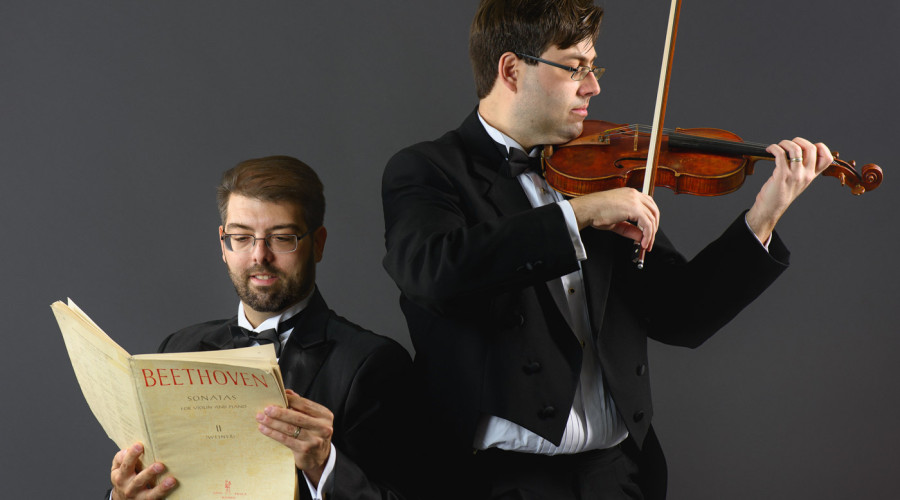
By Dennis D. Rooney
The Irerra Brothers – John (violin) and Joseph (piano) – are alumni of the Eastman School of Music in Rochester, from which they graduated in the class of 2016, both with DMA degrees. Their recital March 21 closed the 31st season of concerts at Duncan Theatre’s Stage West on the campus of Palm Beach State College in Lake Worth. The program was nicely assorted except for their decision to open with Beethoven’s Kreutzer Sonata (No. 9 in A, Op. 47). That large-scale work usually is the closer.
The performance was unfortunately afflicted with a few mishaps, the most troublesome being an apparent malfunction of the piano part that was loaded on a tablet that rested on the music rack. Performers, especially string quartets, are increasingly using them in place of paper scores. The operating software allows for “page turns” at selected intervals, but in this instance, the new page of score did not seem to be appearing in time or perhaps the bottom stave was not completely visible.
As a result, the pianist did not play the full chords of his part but either played a single line to reinforce the tonality or else did nor play at all. When that happened, the violinist became audibly unsettled in both ensemble and intonation (which troubled him throughout the program, mostly on the flat side), and a sense of unease pervaded the first movement. In the second, an Andante with variations, both the first and second variations were taken at oddly slow tempos and the movement also suffered from more software malfunctions in the piano part. The Presto finale had a few more, worst of all in the final measures, where the pianist stopped playing altogether, leaving his partner to finish alone. Such a mishap would be troubling to any performer.
Fortunately, the second half opened with a stylish performance of Three Romances (Op. 22) by Clara Schumann, who was encouraged to compose by her husband, Robert. As a collaborator instead of a competitor, the pieces are distinctly “Schumannesque.” They were played with assurance and pleasing expressiveness.
Stravinsky’s Suite Italienne is one of two sets for violin and cello, respectively, with piano, that were assembled by the composer from his 1919 ballet Pulcinella, based on music by Pergolesi and his Italian contemporaries. Cellist Gregor Piatigorsky collaborated on a Suite Italienne for cello. In 1932, Stravinsky and violinist Samuel Dushkin, who were touring together, arranged it for violin and piano, in which the six movements are Introduzione, Serenata, Tarantella, Gavotte con due Variazioni, Scherzino, and Menuetto e finale.
Once again, although there were few if any software mishaps, I sensed an air of discomfort in the performance, originating more from the violinist than the pianist. Tempos were often labored, pitch problems continued and the Gavotte and Scherzino seemed particularly challenging. Most of all, the performance lacked vitality and zest.
Three of Antonín Dvořák’s Op. 46 Slavonic Dances closed the program, heard in transcriptions of the four-hand piano originals. Nos. 1 in C and 8 in G minor, both furiants, were the Friedrich Hermann arrangements; No. 2, a dumka in E minor, was the famous Fritz Kreisler transcription. More harmonically complex than the others, it was also the least successfully performed of the three. Beyond whatever specifically went wrong with the Irerras’s playing in this recital, the overriding impression I had was a lack of preparation. All too often, their performances sounded too thrown together.